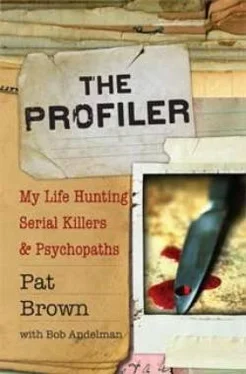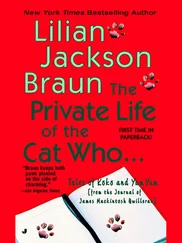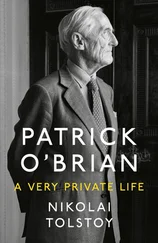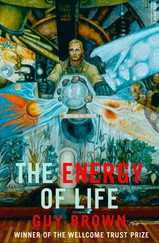The case stalled and no one was arrested. Months went by, then a year, and the police and Donnell’s family were still arguing about who killed the couple. The police said it was someone taking revenge on Donnell over drug territory and for robbing their illegal gambling joints, but Donnell’s family believed the mom’s boyfriend, who was turning state’s evidence, was the target of the crime.
I spent a week in town poring over the evidence. By the weekend, I had an answer as to who I thought was right and who was wrong. Nobody was right and everyone was wrong.
ONE OF THE compelling aspects of this case was how people tend to form a theory and then fit the case to the theory. This happened both with the families and the police detectives, because it’s a natural human response to go for what seems most likely.
If we find a mutilated naked body, we assume it’s a sexual crime. Why would a body be shorn of its clothes if sex wasn’t involved? We don’t think it could be something else. If we find a man shot in the head in an alley and he was wearing gang clothing, we say, “It must be a gang hit.” Of course, it may have nothing to do with a gang. It may just be that he wears gang clothing because he finds it fashionable and, in reality, his girlfriend shot him.
But people will go to the most likely solution first, and sometimes this can cause trouble, because when you focus in on one particular avenue, you often ignore the other possibilities. It’s like watching a magician who distracts you from the real sleight of hand so what he does appears to be genuine magic instead of a highly practiced trick. By the time you figure out that you were staring intently at the wrong hand, you have lost the opportunity to witness what the other hand was doing (with the evidence, in a crime) and this, I believe, is what happened with Donnell Washington.
* * * *
I WAS BROUGHT in to study this case by members of the Washington family two years after the double homicide because they believed the police department focused on the wrong motive for the crime.
Two people were murdered, Renee Washington, fifty-two, and her boyfriend, Frank Bishop, fifty-three, and they were killed at Frank’s place. They had been in a committed relationship for a while. They were looking forward to the family Christmas just a couple weeks away and had their Christmas tree up and decorated, presents beginning to collect underneath the limbs.
Renee had last been seen the evening before the murder when she visited with her mother until she left to spend the night-as she did most of the time-at her boyfriend’s house. Frank was known to be already at home.
At seven in the morning, Renee’s son, Donnell Washington, went by the house because he was supposed to take his mother to a funeral. He arrived at his mother’s boyfriend’s home and knocked on the door. Nobody answered. He knocked again and again.
That’s crazy, Washington said to himself. They have to be in there. She’s expecting me.
He went back to his car, where his own son was waiting to be driven to school.
“Why don’t you go up and knock on the door?”
So the son got out and knocked on the door.
“Dad,” he said, “I heard a thump, but I didn’t hear anything else.”
“If you heard something in there, maybe I should break the door down.”
But Donnell didn’t break the door down and instead called his mother’s sister-his aunt-and said, “What should I do? She’s not answering the door. She should be there, because I have to take her to a funeral.”
The aunt said, “Why don’t you call the police?”
“No,” Donnell said, “I’m going to knock the door down.”
But he didn’t do that. Instead, he took his son to school and finally returned-at ten a.m.!
He used his cell phone and called his cousin, Lamont, to come over. When Lamont got there, Donnell had already kicked the door in and ran out of the apartment and told him, “They’re dead!”
Lamont told his girlfriend to stay in the car, went in, and saw Frank dead on the sofa and his aunt lying facedown on the bedroom floor. He said he freaked and left right away. Donnell later said he didn’t know Frank had been stabbed because the body was so bloody he thought he had been shot. Then he ran the five steps into the bedroom, because his mother wasn’t in the front room, and he found her lying on the floor in a nightshirt and panties, similarly bloodied, and he attempted to revive her. He put her on the bed and applied CPR, but didn’t succeed in bringing her back.
This is where-to use a technical term-some of the story points don’t hold water.
Washington’s cousin, Lamont, said he saw the dead woman on the floor but Donnell said as soon as he found his mother he moved her to the bed and gave her CPR. If he did the CPR when he said, how was it that Lamont said he had seen the woman still lying on the floor? When Lamont arrived, Donnell ran out of the apartment, told him that his mother and Frank were dead, the implication being Donnell must have already completed the CPR. Yet Lamont saw the woman on the floor. Had Donnell given CPR at that point? Something didn’t add up.
But others who arrived on the scene witnessed Donnell giving his mother CPR. Next, Renee’s sister, Charmaine, arrived on the scene, went into the apartment, saw Donnell trying to give his mother CPR, and then ran to a neighbor’s, banged on their door, and told them to call 911. There was no landline at Frank’s apartment.
The police came on the scene and completed a routine crime scene process. Donnell was still doing CPR.
Donnell didn’t do CPR when it might have been useful-in the first few minutes after he found his mother. Instead, he waited until his aunt and the police arrived. Was Donnell’s CPR just a show?
The police focused in on the fact that Donnell was a violent felon who had a history of bad behaviors. He had just served seven years in prison for battery, and he told police he had just stolen forty pounds of marijuana from drug dealers.
Sometimes, you look at the last event that occurred in somebody’s life. “What’s the most recent thing that made somebody mad at Donnell Washington? What happened in the last few days?”
The police concluded that the double homicide was a retaliation hit in which they went after Washington ’s mom to get back at Donnell, and they took out the boyfriend as collateral damage.
Not a bad theory.
Except that there were several curious things about the case. One was something that Donnell said. This happened to be an African American community, and he said, “In our community, nobody goes after somebody’s momma. If they want me, they are going to go after me. They know who I am. They’ll come after me. They won’t take out my mother.”
Culturally, that is correct in my experience. It is rare that in an African American community a bad guy would attack somebody’s mother in retaliation for something that her son did. But that was the angle the police pursued.
It was the Washington family that disputed this theory.
“I think the police have this wrong,” said Charmaine. “First of all, this was not her apartment. This was her boyfriend’s. I think somebody was going after him. Renee stayed at her boyfriend’s home often, but she could have been at her own place. But her boyfriend turned state’s evidence in a drug case. We think they were after the boyfriend and she was collateral damage.”
That was actually a pretty good theory, too.
Which theory does the investigator work on? Again, the problem with many theories is that people are fitting the available evidence to the theories they like best, ignoring any evidence that will blow their theory out of the water. The evidence should guide you to a theory; you should not be allowing the theory to guide the evidence upon which you focus.
Читать дальше












